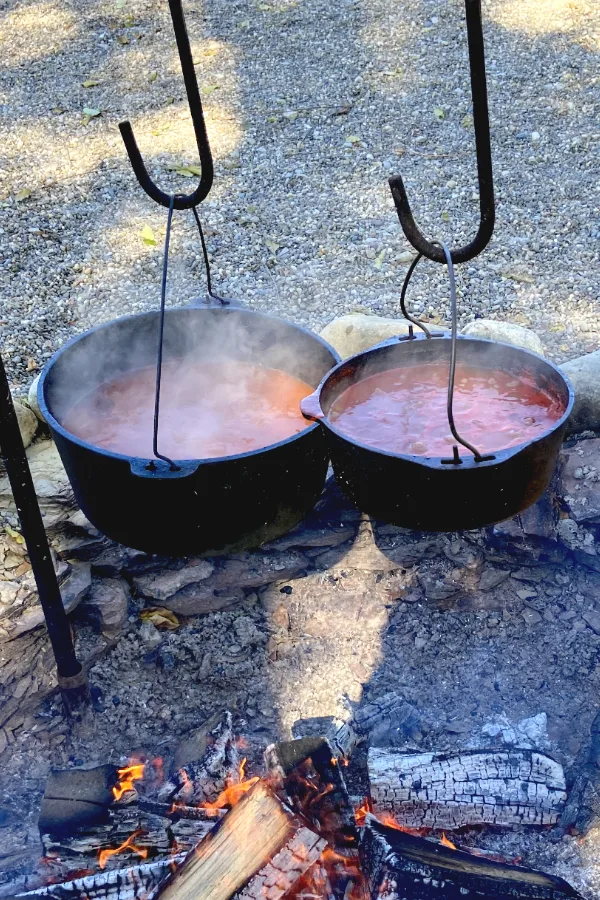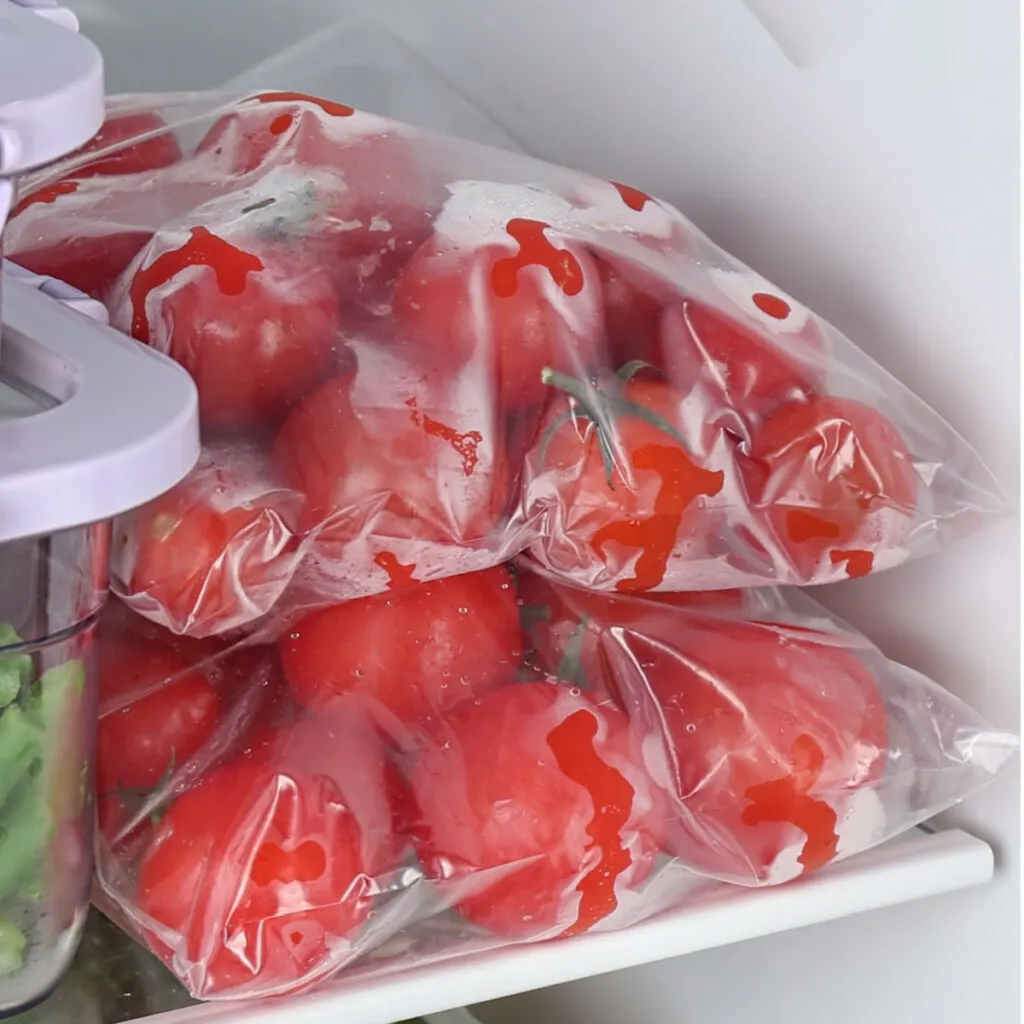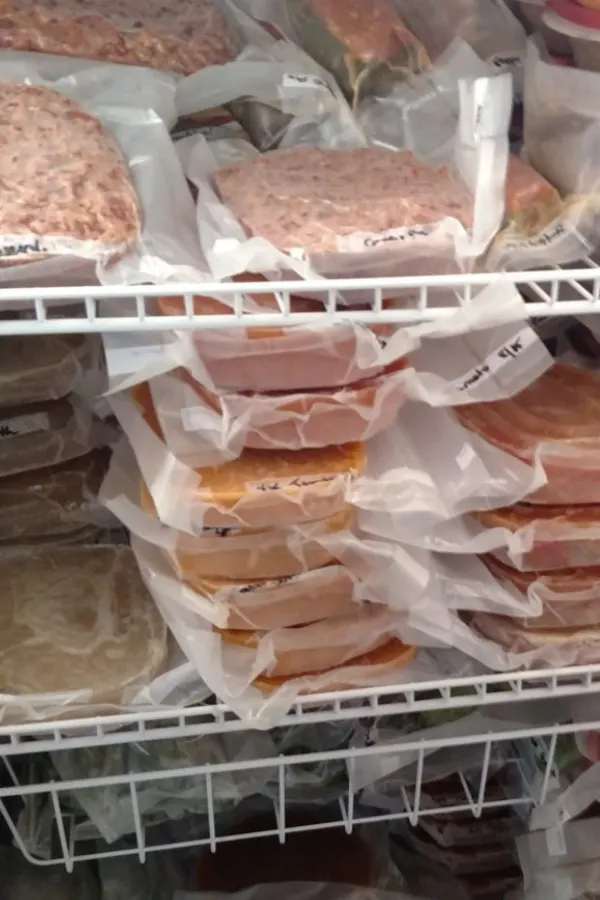If you find yourself with a bunch of ripe tomatoes and don’t have the time to use them before they go bad, check out these 5 different options on how to freeze tomatoes. This will allow you to enjoy the taste of summer even during the colder months when fresh, flavorful tomatoes may not be easily accessible.
When most people think about how to preserve tomatoes, images of spending hours in the kitchen, sweating over a hot pot of boiling water making salsa, juice and soups are the first to come to mind. Although many of us do this when the first few batches of tomatoes are ripe, towards the end of the garden season even the experienced gardeners are searching for ways to use tomatoes before the get soft and mushy.
Therefore this year, it is time to take a new look on how to save those tomatoes before they go bad. In fact, freezing tomatoes is actually one of the easiest tasks that you will ever do!
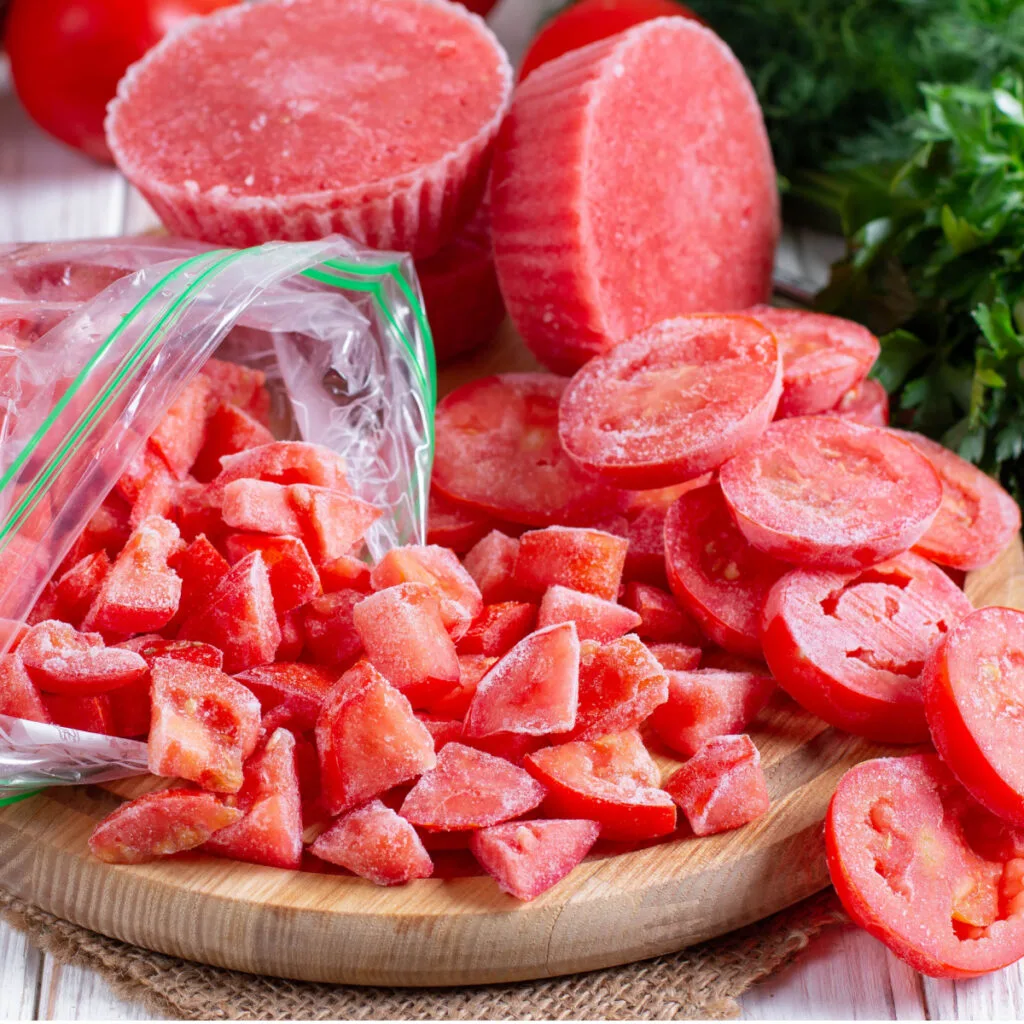
Why Freezing Is A Great Option
Although many gardeners like to preserve tomatoes by canning Salsa, Pasta Sauce, Tomato Juice, and Diced Tomatoes, there are many individuals that don’t have the appropriate canning equipment to do so.
And even if you do have equipment, you may have run out of canning jars and/or lids. So instead of going out to purchase more jars that you may not even use next year, freeze your tomatoes instead.
Besides not letting your tomatoes go bad, there are several other reasons why freezing tomatoes may be your best option. That is, of course, if you have enough freezer space to store them.
1. Preservation of Freshness and Nutrients
Freezing tomatoes at their peak of ripeness helps to lock in their freshness, flavor, and nutritional content. Once frozen, the enzymatic reactions that cause deterioration in tomatoes comes to a near halt. Therefore, be sure to freeze only just ripe tomatoes and not those that still need more time to ripen.
2. Convenience
Frozen tomatoes can be used in a variety of recipes without requiring immediate use. You can add them directly to soups, stews, sauces, or other cooked dishes. This can be a time-saving option for busy households or during the off-season when fresh, flavorful tomatoes might not be readily available.
3. Batch Cooking
If you like to cook in bulk or make large batches of sauces, salsas, or other tomato-based dishes, freezing tomatoes allows you to prepare these items when tomatoes are in season and use them throughout the year.
4. Customizable Portioning
You can freeze tomatoes in portion sizes that suit your cooking needs. You can freeze them whole, diced, crushed, or pureed. This allows you to easily use the desired amount for a particular recipe without thawing more than you need or without any additional work involved.
However, it’s important to note that freezing does change the texture of tomatoes. When thawed, the tomatoes will become softer and release more liquid, which is why they are most suitable for using in cooked dishes rather than for eating fresh.
However if you are overwhelmed with the amount of tomatoes that you have and you want to preserve them for use in sauces and soups over the winter, freezing is the key.
No, you will not have that firm texture of a fresh picked tomato, but tomatoes that are frozen are great to use as a base for many recipes.
How To Freeze Tomatoes – 5 Different Methods
1. FREEZE TOMATOES WHOLE WITH THE SKIN ON
It doesn’t get any easier than this! You can actually pick tomatoes, wash them off and freeze them whole. Just put them in an air tight container and use them as you need throughout the year.
The best part about freezing whole tomatoes is that when you take them out to thaw, the skin will peel off easily. That means you won’t have to take that extra step of putting tomatoes in boiling water to remove the skin.
2. FREEZE TOMATOES WITHOUT THE SKIN
Some people prefer to remove the skin before they are stored in the freezer for the winter.
Although you could blanch them in boiling water for a minute and dip them in a cold ice water bath to remove the skin, we have found an easier way!
Cut the stem end off of the tomato and place tomatoes on a baking sheet and place in the freezer. After they flash freeze (1-3 hours) run them under cold water and the skins will fall right off!
Then simply freeze the skinless tomatoes in an air tight container or Food Saver vacuum sealed freezer bags.
3. FREEZE TOMATO HALVES, QUARTERS, OR DICED TOMATOES
If you have a little extra time, it is great to freeze tomato halves, quarters or diced tomatoes.
Taking a little time now to prepare the tomatoes will pay off in the middle of winter, especially on busy weeknights.
Follow the same process as above for removing the skins. Then cut the tomatoes as desired and freeze them in measured portions in an air tight container.
As for the portion size, the amount will depend on how you most often use them in recipes. For example, we use a can of diced tomatoes in many of our recipes.
Therefore I prefer to dice and store the tomatoes in the same quantities as store-bought cans. I will initially freeze 15 ounces of diced tomatoes in a plastic, freezer safe container. Then when it is frozen solid, I will transfer the frozen block into Food Saver bags for easy freezer storage.
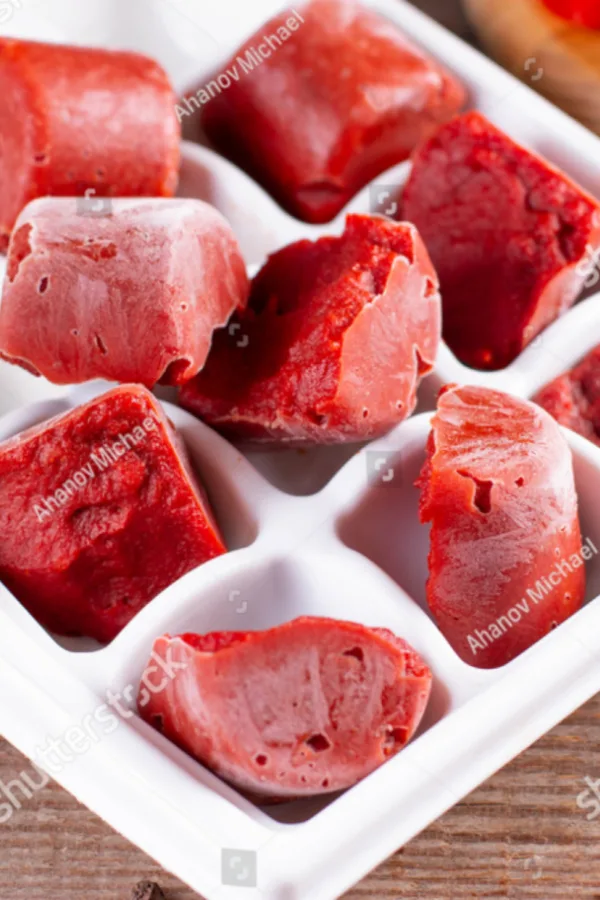
4. FREEZE PUREED TOMATOES
Remove the stem, core and any bad spots from the tomato. Then cut the tomatoes in large chunks and place in a food processor or blender. Pulse a few times until the desired consistency is achieved and place the puree in a slow cooker.
Cook on high for 10-12 hours or until reduced and thickened to desired consistency. TIP: Add the puree to a slow cooker in the evening and let it cook overnight. Then let it cool in the morning and then freeze the tomato puree in desired quantities.
5. USE FRESH TOMATOES TO MAKE SOUP AND THEN FREEZE
One of our favorite ways to freeze tomatoes is to mix them into our favorite soup recipes.
Every year we will make batches of Creamy Tomato Soup, Chili and Vegetable Soup using the tomatoes from the garden.
Once the soup has cooled, we ladle it into quart size, rectangular containers and place in the freezer.
When the soup is solid, we transfer each soup brick to food saver bags to seal. Then they labeled and stacked neatly in the freezer for a quick meal whenever we need one.
And there is nothing better than pulling out homemade soup made from your summer garden tomatoes in the middle of winter!
So this year, get the most from your tomatoes and throw them in the freezer! You’ll be thankful on those cold, dreary days to be enjoying a little taste of summer.
Enjoy!
Mary and Jim

Jim and Mary Competti have been writing gardening, DIY and recipe articles and books for over 15 years from their 46 acre Ohio farm. The two are frequent speakers on all things gardening and love to travel in their spare time.
As always, feel free to email us at thefarm@owgarden.com with comments, questions, or to simply say hello! You can sign up for our free email list in the subscribe now box in the middle of this article. Follow us on Facebook here : OWG Facebook. This article may contain affiliate links.

